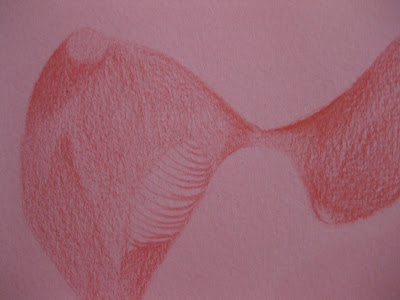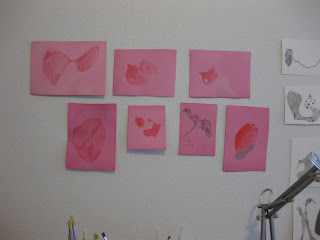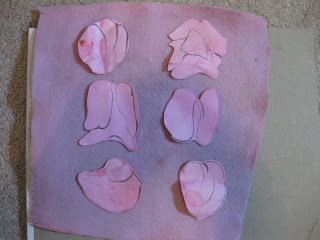Translate
Friday, March 23, 2012
Thursday, March 22, 2012
Lists
Bed of nails
Bed of roses
Bed of sorrow
Bed of memories
Bed of gold
Bed of misinformation
Bed of anguish
Bed of languages
Bed of scars
Bed of satisfaction
Bed of peace
Bed of roses
Bed of sorrow
Bed of memories
Bed of gold
Bed of misinformation
Bed of anguish
Bed of languages
Bed of scars
Bed of satisfaction
Bed of peace
Tuesday, March 20, 2012
Sunday, March 18, 2012
Saturday, March 17, 2012
Aphrodite
Objects and images made to remind us of our beliefs and to visually signify to others what our beliefs are. I could forever research this topic. Leads me to The Museum of Jurassic Technology by David Wilson. Interesting how this museum plays with our interpretation of objects and images.
 |
| Lekythos (Oil Flask). Mid 4th century B. C., 7.5 inches, ceramic, Late Classical Period. |
 |
| Figurine of woman nursing a child. 600-480 B.C., 7inches, Limestone. |
"Aphrodite's origins are rooted in the goddesses worshipped by ancient cultures near Greece. The ancient Greeks considered Aphrodite a foreigner: born at sea, hailing from Paphos on southwestern Cyprus in the eastern Mediterranean. Cyprus was at the crossroads of Mediterranean trade routes—a place from which the religious and cultural ideas of the Near East traveled westwards. Aphrodite probably developed from a preexisting divinity, introduced to the Greeks through contact with Cyprus.These older goddesses lent Aphrodite many of her defining characteristics as a symbol of love, beauty, fertility, maternity, and strength." - from MFA Educators Online. Link here.
 |
| Second-century BC Greek terracotta from South Italy of Aphrodite flanked by cockle-shells. Source link here. |
 |
| The Prayer of Paris to Aphrodite |
Tastes of Paradise by Wolfgang Schivelbusch
I am most interested in the history of the senses. Our need and desire for sensual satisfaction has greatly impacted world history. Could who we are as a culture solely be due to the senses? I think the impact of sensual desire is often overlooked when examining culture and history.
One book that I find most intersting on this subject is Schivelbusch's Tastes of Paradise. From the preface, "This book deals not only with the history of Genussmittel - the spices, stimulants, and other substances ingested or inhaled by humans to produce a pleasurable effect - but more importantly with the question: In what say did these substances affect the history of man?" Just a quick note - I would change that last word to "humankind".
A comprehensive review of Tastes of Paradise by David Denborough. I found the review at the Dulwich Centre. Link here.
More books by Schivelbusch that I would like to read.
"Defeat in modern western history is the subject of this book, but the implications are global. The reaction of other civilisations to western victories is, after all, at the core of most interpretations of world events over recent centuries and indeed of most interpretations of today's international politics."-from an article by Martin Woolacott, The Guaridan, 2003. Link here.
One book that I find most intersting on this subject is Schivelbusch's Tastes of Paradise. From the preface, "This book deals not only with the history of Genussmittel - the spices, stimulants, and other substances ingested or inhaled by humans to produce a pleasurable effect - but more importantly with the question: In what say did these substances affect the history of man?" Just a quick note - I would change that last word to "humankind".
A comprehensive review of Tastes of Paradise by David Denborough. I found the review at the Dulwich Centre. Link here.
More books by Schivelbusch that I would like to read.
"Defeat in modern western history is the subject of this book, but the implications are global. The reaction of other civilisations to western victories is, after all, at the core of most interpretations of world events over recent centuries and indeed of most interpretations of today's international politics."-from an article by Martin Woolacott, The Guaridan, 2003. Link here.
Friday, March 16, 2012
Thursday, March 15, 2012
On Longing, Susan Stewart
Listen to Stewart read her paper, On the Art of the Future. Slought Foundation. Link here.
I have been carrying this book around and reading it since graduate school. I am most interested in the chapters that discuss the souvenir and the miniature.
"The souvenir reduces the public, the monumental, and the three-dimensional into the miniature, that which can be enveloped by the body..." -from Chapter 5, Objects of Desire
I have always been interested in physical perception. Holding an object in one hand. Make a fist and cradle the object with your fingers. Are you holding the object or hiding it? You know it is there, you can feel it. Others do not know. Reverse this. If I occupy space in a large cathedral, now I am the object. I can be the envelope or I can be in the envelope.
"The nostalgic is enamored of distance, not of the referent itself. Nostalgia cannot be sustained without loss. For the nostalgic to reach his or her goal of closing the gap between resemblance and identity, lived experience would have to take place, an erasure of the gap between sign and signified." --from Chapter 5, Objects of Desire
I have been carrying this book around and reading it since graduate school. I am most interested in the chapters that discuss the souvenir and the miniature.
"The souvenir reduces the public, the monumental, and the three-dimensional into the miniature, that which can be enveloped by the body..." -from Chapter 5, Objects of Desire
I have always been interested in physical perception. Holding an object in one hand. Make a fist and cradle the object with your fingers. Are you holding the object or hiding it? You know it is there, you can feel it. Others do not know. Reverse this. If I occupy space in a large cathedral, now I am the object. I can be the envelope or I can be in the envelope.
"The nostalgic is enamored of distance, not of the referent itself. Nostalgia cannot be sustained without loss. For the nostalgic to reach his or her goal of closing the gap between resemblance and identity, lived experience would have to take place, an erasure of the gap between sign and signified." --from Chapter 5, Objects of Desire
Wednesday, March 14, 2012
Monday, March 12, 2012
Jamie Marie Waelchli, "Thought Map No. 8"
I found this artist on portland.net. Link here.
Awhile back I was making drawings and diagrams using bumwad paper, in layers. I think this image is beautiful. Think I will pull out the bumwad paper and do some experimenting.
"False Front presents Jamie Marie Waelchli's Thought Maps, "a continuing series of psychoanalytic installations. Using strategically positioned illumination, Waelchli directs the viewers eye through layered sheets of vellum textured with self-examining stream of consciousness writing, diagrams and drawings. Designating these works as 'maps,' she encourages the viewer to navigate, unconditionally, the artist's notion of continuous introspection-stimulus for both development and reversion of the creative process."
Awhile back I was making drawings and diagrams using bumwad paper, in layers. I think this image is beautiful. Think I will pull out the bumwad paper and do some experimenting.
"False Front presents Jamie Marie Waelchli's Thought Maps, "a continuing series of psychoanalytic installations. Using strategically positioned illumination, Waelchli directs the viewers eye through layered sheets of vellum textured with self-examining stream of consciousness writing, diagrams and drawings. Designating these works as 'maps,' she encourages the viewer to navigate, unconditionally, the artist's notion of continuous introspection-stimulus for both development and reversion of the creative process."
Sunday, March 11, 2012
Museum
I think artists curating and exhibiting their work alongside museum collections is interesting.
"I support anything that brings new perspectives to museum collections, and nothing has been more successful at re-contextualizing collections than exhibitions organized by artists at numerous museums (which I’ve written about previously, on Jan. 31, 2011 and Jan. 3, 2009). No one has more invested in museum collections than artists, for whom they function as primary textbooks. And artists are free from the conventions of art history and the ethics of curatorial practice. The British Museum asked Grayson Perry to address its collections, and I’ve never seen an artist do a better job of it.
Perry turns out to be a wonderful teacher in The Tomb of the Unknown Craftsman, which has been extended to Feb. 26, 2012. In displaying a selection of his large, figured pots alongside his choices from the museum storerooms, Perry sidestepped questions of technique and style (which he has obviously studied seriously) to concentrate on the objects’ uses. In doing so, he gave currency to a motley selection of objects, produced by anonymous craftsmen (hence, the exhibition’s title) over several thousand years of civilization.
He ignored obvious masterpieces in favor of objects that were mundane and occasionally fragmentary. Some were used as reliquaries, others were associated with shamanistic rituals and a number were pilgrimage souvenirs. He related his own transvestism to objects used in ceremonies of sexual role-playing, and ended the exhibition with his own, extravagant version of objects meant to accompany the dead on their journey." Andrea Kirsh, The Art Blog. Link here.
"I support anything that brings new perspectives to museum collections, and nothing has been more successful at re-contextualizing collections than exhibitions organized by artists at numerous museums (which I’ve written about previously, on Jan. 31, 2011 and Jan. 3, 2009). No one has more invested in museum collections than artists, for whom they function as primary textbooks. And artists are free from the conventions of art history and the ethics of curatorial practice. The British Museum asked Grayson Perry to address its collections, and I’ve never seen an artist do a better job of it.
Perry turns out to be a wonderful teacher in The Tomb of the Unknown Craftsman, which has been extended to Feb. 26, 2012. In displaying a selection of his large, figured pots alongside his choices from the museum storerooms, Perry sidestepped questions of technique and style (which he has obviously studied seriously) to concentrate on the objects’ uses. In doing so, he gave currency to a motley selection of objects, produced by anonymous craftsmen (hence, the exhibition’s title) over several thousand years of civilization.
He ignored obvious masterpieces in favor of objects that were mundane and occasionally fragmentary. Some were used as reliquaries, others were associated with shamanistic rituals and a number were pilgrimage souvenirs. He related his own transvestism to objects used in ceremonies of sexual role-playing, and ended the exhibition with his own, extravagant version of objects meant to accompany the dead on their journey." Andrea Kirsh, The Art Blog. Link here.
Lungs from Ankle Cemetary
Looking for illustrations of lungs and found this. I like the combination of drawing and writing.
Link here to see Ankle Cemetary blog.
Link here to see Ankle Cemetary blog.
Saturday, March 10, 2012
Air Dry Porcelain Clay
I challenged myself to make something every day for 30 days and post on my blog. Here is what I made today. I only had about 20 minutes to myself today. I have an idea about two vessel like forms joined together - similar to lungs. These are too round for me. Will have to try it again tomorrow. Each one about 2.5 inches in length. Each one fits in the palm of your hand. This part I like.
Spell of the Sensuous
I just got David Abram's new book, Becoming Animal. I am a huge fan of Spell of the Sensuous. My copy is marked up and tagged with post-its notes. Ants that take rice and spiders in caves are two of my favorite memories from this book. A few years back I assigned Spell to my advanced sculpture class. Each week we read a chapter and discussed in class. In addition to discussion, students were asked to make a small, visual piece that responded to the chapter. All the work produced was reflective and thoughtful visual interpretations of the chapter. For one of my students, a love affair with using rice in her work began with this book.
"In prose at once poetic and precise, Abram demonstrates that our most cherished human attributes - from the gift of language, to the awareness of past and future, to the rational intellect itself - all emerge in interaction with the animate natural world, and remain wholly dependent upon that living world for their coherence. Animal tracks, word magic, the speech of stones, the power of letters, and the taste of the wind all figure prominently in this astonishing and intensely ethical work." Source is Wild Ethics. Link here.
"The book touches on a wide range of themes, from our perception of the natural world to the way we use of language and symbols to process our experience." The Ecology of Magic: An Interview with David Abram by Scott London. Link here.
"In prose at once poetic and precise, Abram demonstrates that our most cherished human attributes - from the gift of language, to the awareness of past and future, to the rational intellect itself - all emerge in interaction with the animate natural world, and remain wholly dependent upon that living world for their coherence. Animal tracks, word magic, the speech of stones, the power of letters, and the taste of the wind all figure prominently in this astonishing and intensely ethical work." Source is Wild Ethics. Link here.
"The book touches on a wide range of themes, from our perception of the natural world to the way we use of language and symbols to process our experience." The Ecology of Magic: An Interview with David Abram by Scott London. Link here.
Thursday, March 8, 2012
Drawings of Curiosities
"Albertus Seba's "Cabinet of Curiosities" is one of the 18th century's greatest natural history achievements and remains one of the most prized natural history books of all time.
Though it was common for men of his profession to collect natural specimens for research purposes, Amsterdam-based pharmacist Albertus Seba (1665-1736) had a passion that led him far beyond the call of duty. His amazing, unprecedented collection of animals, plants and insects from all around the world gained international fame during his lifetime. In 1731, after decades of collecting, Seba commissioned illustrations of each and every specimen and arranged the publication of a four-volume catalog detailing his entire collection-from strange and exotic plants to snakes, frogs, crocodiles, shellfish, corals, insects, butterflies and more, as well as fantastic beasts, such as a hydra and a dragon.
Seba's scenic illustrations, often mixing plants and animals in a single plate, were unusual even for the time. Many of the stranger and more peculiar creatures from Seba's collection, some of which are now extinct, were as curious to those in Seba's day as they are to us now."
I have romantic notions about cabinets of curiosities. The thrill of the search and the satisfaction of the find. How each object holds a memory of when it was found. The desire to keep looking, keep collecting. And then the drawings, yet another romance. The time spent in solitude responding to marks on the paper. The layers of graphite and charcoal. The magic of an image appearing on the two-dimensional surface.
I found images and quote on BibliOdyssey. Link here.
Subscribe to:
Posts (Atom)













































